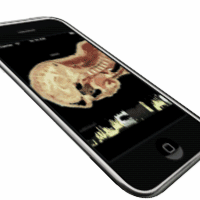Visible Human on the iPhone
Spring 2011
Master Semester Project
Project: 00224

The Visible Humanis a large collection of images organized as 2-D slices of a 3-D volume. They were acquired from a human body, and come from several modalities such as x-rays, magnetic resonance, and histology. In a desktop environment, there are several possibilities to display this large amount of data. The most usual is to display the slices themselves, or to render pre-segmented versions of organs.
At first sight, the restricted environment of the iPhone (small screen, small memory, weak processing capabilities) seems unfavorable to access the large amount of volumetric data of the Visible Human. But this device has input capabilities that go beyond the traditional mouse and keyboard. In this project, we propose to take advantage of the accelerometer in the iPhone to display real-time slices that change in response to the orientation of the iPhone. In a first stage, only the orientation will be taken into account. In a second stage, the accelerometer will also be used dynamically as an inertial platform to move through the slices. The development will be software only and will be performed in the iPhone simulator provided by Apple.
At first sight, the restricted environment of the iPhone (small screen, small memory, weak processing capabilities) seems unfavorable to access the large amount of volumetric data of the Visible Human. But this device has input capabilities that go beyond the traditional mouse and keyboard. In this project, we propose to take advantage of the accelerometer in the iPhone to display real-time slices that change in response to the orientation of the iPhone. In a first stage, only the orientation will be taken into account. In a second stage, the accelerometer will also be used dynamically as an inertial platform to move through the slices. The development will be software only and will be performed in the iPhone simulator provided by Apple.
- Supervisors
- Philippe Thévenaz, philippe.thevenaz@epfl.ch, 021 693 51 61, BM 4.137
- Michael Unser, michael.unser@epfl.ch, 021 693 51 75, BM 4.136